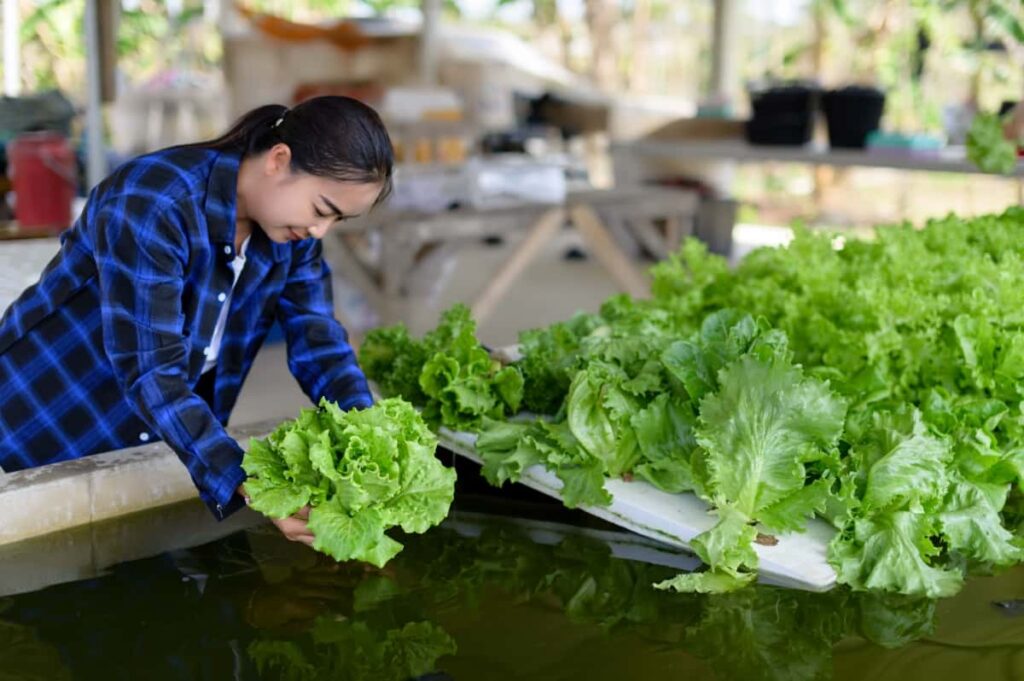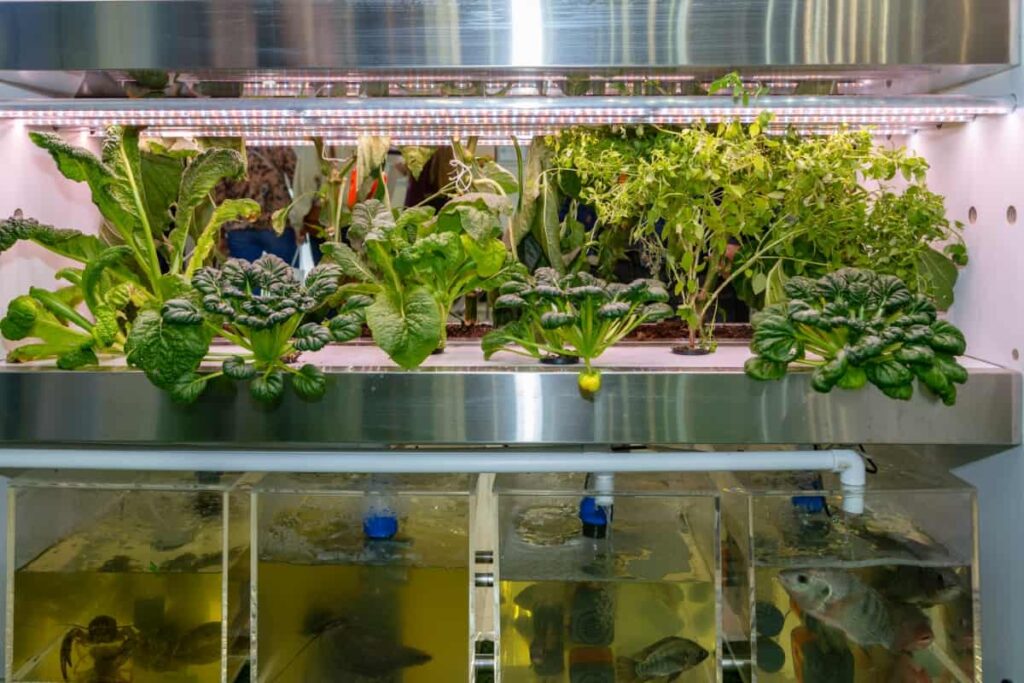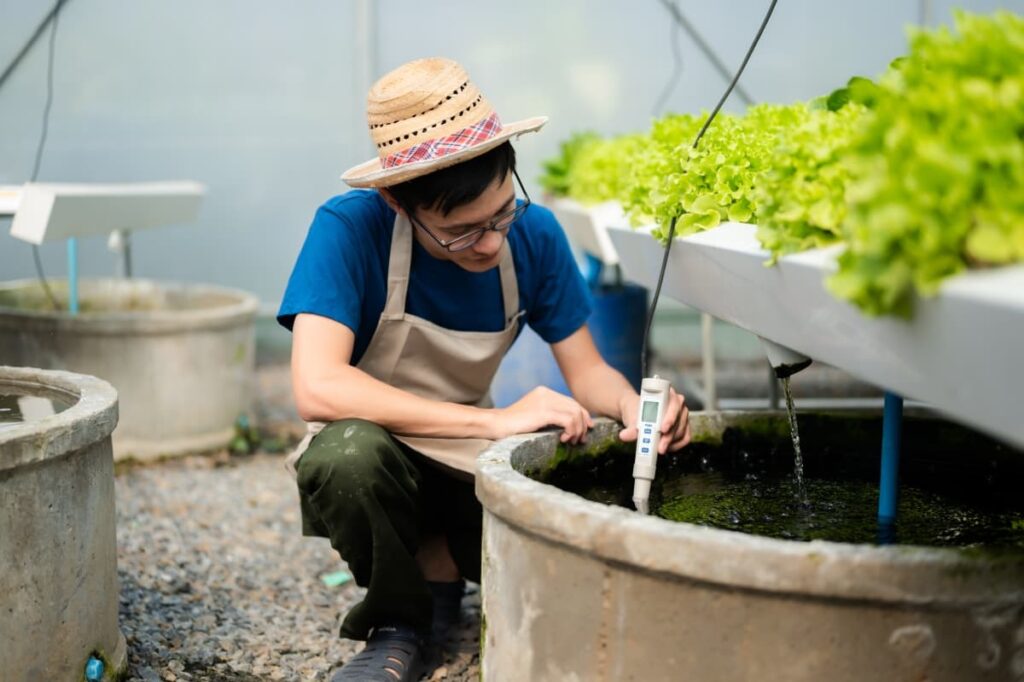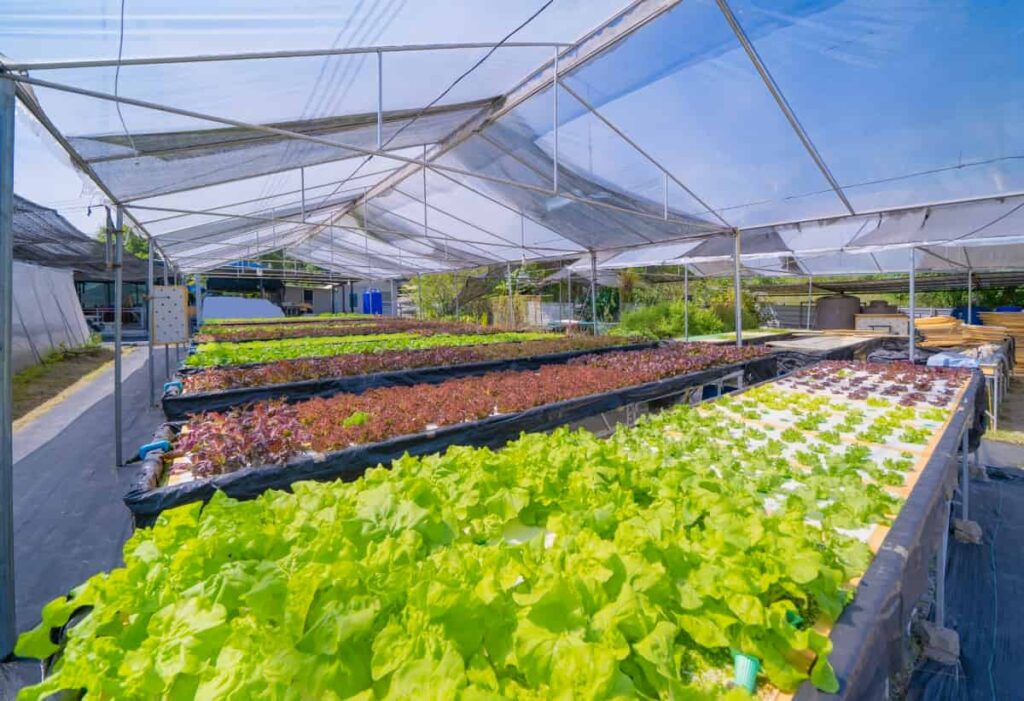Aquaponic farming is a sustainable method of agriculture that combines aquaculture systems (raising fish) with hydroponics (growing plants without soil). In this innovative system, fish waste provides nutrients for the plants while the growing plants naturally filter and clean the water for the fish.

Benefits of Aquaponic Systems
The main advantage is the efficient use of space, as these systems can be set up in relatively small areas and still yield a bountiful harvest of both plants and fish. By using the symbiotic relationship between plants and fish, aquaponics minimizes water usage compared to traditional farming methods.
Another advantage is the reduction of environmental impact, as aquaponic systems require no chemical fertilizers or pesticides that could harm ecosystems. This makes them eco-friendly for those concerned about sustainability and reducing their carbon footprint.
Additionally, the ability to grow organic produce at home without harmful chemicals allows for healthier food options right from your backyard. Furthermore, aquaponic systems promote self-sufficiency by providing a constant supply of fresh food year-round.
Components of an Aquaponic System
The main elements include a fish tank, grow bed, water pump, and piping system. The fish tank houses aquatic life that provides nutrients for the plants. It’s essential to choose fish species that thrive in a closed-loop environment, such as tilapia or goldfish.
The grow bed is where plants are cultivated using the nutrient-rich water from the fish tank. This relationship between fish and plants creates a sustainable ecosystem. A reliable water pump ensures proper circulation of water throughout the system, effectively delivering nutrients to both fish and plants.
Choosing the Right Location
The ideal spot should have access to natural light, as plants need sunlight for photosynthesis. Look for a space that receives at least 6-8 hours of sunlight per day. Also, make sure the location is accessible for monitoring and maintenance purposes. Consider proximity to a water source as well since topping off your system with fresh water will be necessary.
Another important aspect is stability – choose a level surface that can support the weight of your aquaponic setup without any risk of tipping over. Avoid placing the system in areas prone to extreme temperature fluctuations or strong winds.
By carefully selecting the right location for your aquaponic farm, you’re setting yourself up for success in growing healthy and thriving crops while maintaining a balanced ecosystem within your system.
In case you missed it: Hydroponics in Urban Apartment Gardening: Benefits and How to Set Up Guide

Setting Up the Aquaponic System
It is an exciting step towards creating a sustainable and thriving ecosystem right in your own home. Begin by assembling the necessary components, including a fish tank, grow bed, water pump, and piping. Ensure everything fits together securely to prevent leaks or malfunctions.
Position the system in a location with ample sunlight for plant growth while also considering factors like temperature control and accessibility for maintenance. Secure the fish tank above the grow bed so gravity can aid in water flow from the fish waste to nourish your plants. Next, establish a balanced environment by cycling the system to allow beneficial bacteria to develop and convert fish waste into nutrients for your plants.
Selecting Fish and Plant Species
For fish, consider popular choices like tilapia, catfish, trout, or even ornamental varieties like koi. Each species has unique requirements and growth rates that can impact your overall system. On the plant side of things, leafy greens such as lettuce, basil, and kale thrive in aquaponic systems. Herbs like mint and cilantro also do well alongside fruiting plants like tomatoes or peppers.
Water Quality Management
Water quality is crucial for the success of your aquaponic system. Monitoring pH levels, ammonia, nitrites, and nitrates is essential to keeping your fish healthy and plants thriving.
Maintaining a balanced ecosystem within your aquaponic setup requires regular testing and adjustments. Consider investing in a quality water kit to assess the system’s parameters accurately.
Proper filtration systems play a major role in keeping the water free from harmful substances that could impact the overall health of your aquaponic environment. Incorporating natural elements like aquatic plants or beneficial bacteria can help regulate water quality by aiding in nutrient absorption and waste breakdown. Remember, consistent monitoring and proactive measures are key to preventing imbalances that could potentially harm both your fish and plants in the long run.
In case you missed it: How to Build a Cheap Hydroponic System: Low-cost and Budget Friendly Strategies for Beginners

Feeding and Caring for Your Aquaponic System
The fish in the tank provide nutrients for the plants, so ensuring they are well-fed is crucial. Remember to feed them daily with high-quality fish food, taking care not to overfeed which can lead to water quality issues.
Monitoring the pH levels of your system regularly will help you keep a healthy environment for both the fish and plants. Adjusting the pH as needed ensures optimal nutrient absorption by the plants.
It is also important to regularly inspect your plants for signs of pests or diseases. By catching any issues early on, you can prevent plants from spreading and affecting your entire crop. Proper plant care includes pruning dead leaves and providing adequate light exposure for optimal growth.
Harvesting Your Crops
Before harvesting, ensure that your plants have reached their optimal growth stage for the best flavor and nutrition. Different plant species may have varying harvest times, so be attentive to each one’s specific needs.
When it comes time to harvest, gently remove the mature fruits or vegetables from their stems or branches. To encourage further growth, take care not to damage any part of the plant. Freshly harvested produce from an aquaponic system often boasts exceptional taste and texture due to its nutrient-rich environment.
In case you missed it: How to Grow Vegetables in Aquaponic Systems: Types, Methods, Requirements, and Disadvantages

Troubleshooting Common Aquaponic Issues
The common issue you might face is pH fluctuations in the water. This can be resolved by regularly testing and adjusting the pH levels to ensure they stay within the range for fish and plants. Another challenge you might come across is nutrient deficiencies in your plants, which could indicate a lack of proper nutrients reaching them. Adding a balanced fertilizer or adjusting your feeding schedule can help address this issue effectively.
Leaky pipes or clogged filters are also potential culprits that may disrupt the flow of water in your system. Regular inspections can prevent these issues from causing major disruptions to your aquaponic setup.
By being proactive and attentive to any changes in your system, you’ll be better equipped to troubleshoot common aquaponic issues and maintain a healthy environment for fish and plants to thrive.
Aquaponics combines aquaculture and hydroponics in a closed-loop system that maximizes resource efficiency. This natural symbiosis eliminates the need for synthetic fertilizers or harmful chemicals, making it an eco-friendly gardening method.
- Budget Friendly Sheep Shed Ideas: Cheap and Low-Cost Tips
- How Much Do Cattle Farmers Make: Revenue Streams in Cattle Farming
- Management Pests and Diseases in Your Cotton Field
- Sheep Farming Business Plan for Beginners
- Aquaponic Farming at Home: A Step-By-Step Guide
- Profitable Village Farming Business Ideas in 2024
- High-Yield Aquaculture: Fast-Growing Fish for Farming
- Effective Fish Pond Construction Techniques for Beginners
- Irrigation and Water Management in Pineapple Farming
